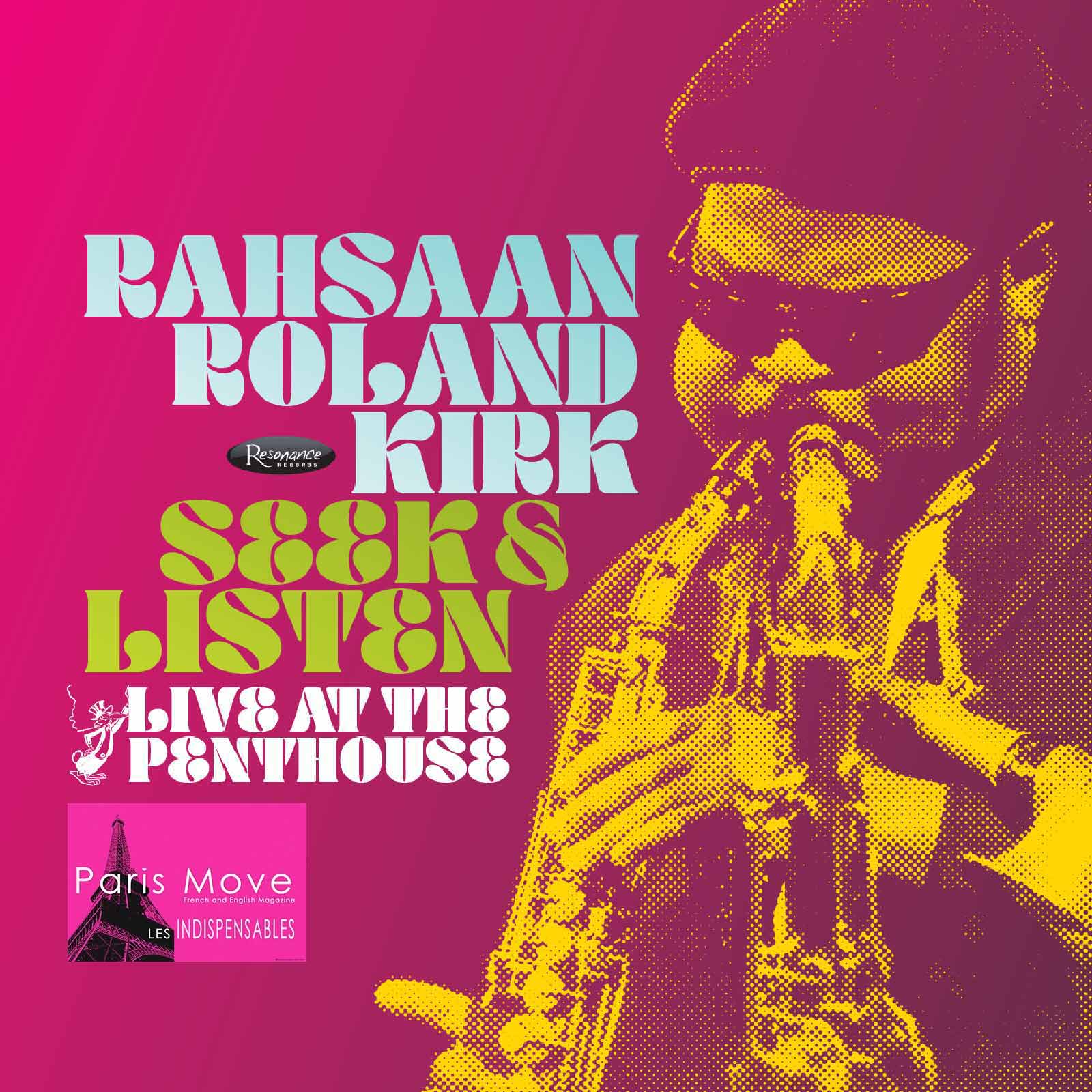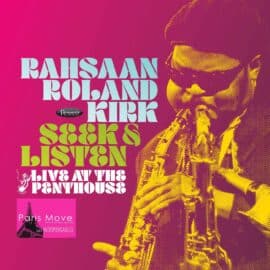| Jazz |

Rahsaan Roland Kirk’s Sonic Resurrection: Vibrations in the Village and the Sound of Freedom.
It begins with a burst of breath, a human storm through metal and reed. Then come the chords, the crash of cymbals, the rise of an audience pulled into ecstasy. Nearly sixty years later, that moment still feels electric. Vibrations in the Village: Live at the Village Gate, newly released by Resonance Records, isn’t just another archival live album. It is a time capsule from one of jazz’s most radical minds, restored with such fidelity that you can almost feel the sweat in the air.
Four years after Kirk’s last live release, Resonance delivers this extraordinary document in tandem with another lost treasure. What distinguishes Vibrations in the Village is not only the performance itself, wild, fearless, and exuberantly human, but the sound. The improvement in audio capture is striking. Instruments are less compressed, more tangible, more immediate. The listener is no longer separated by tape hiss or distance; the music seems to breathe right in front of you. This proximity allows us to hear the details of intention, the way Kirk shapes a phrase, pushes a horn beyond its limit, turns a solo into a sermon. The audience, too, becomes part of the composition, their shouts and gasps echoing the fervor of a crowd intoxicated by genius.
The recording was made live at Seattle’s legendary Penthouse jazz club on August 12 and 19, 1967, with Kirk joined by pianist Rahn Burton, bassist Steve Novosel, and drummer Jimmy Hopps. Originally captured by radio host Jim Wilke for KING-FM, the sessions were transferred from the original master tapes and restored by Matthew Lutthans at The Mastering Lab. The result is remarkable, a sonic resurrection. Resonance’s deluxe two-CD edition comes wrapped in a beautifully illustrated booklet, featuring rare photographs by Jan Persson, Tom Copi, Rolf Ambor, and others; newly commissioned liner notes from John Kruth and May Cobb; and reflections from saxophone titans James Carter and Chico Freeman, trombonist Steve Turre, Kirk’s widow Dorthaan Kirk, and Adam Dorn, son of producer Joel Dorn, one of Kirk’s lifelong supporters.
Rahsaan Roland Kirk’s place in modern jazz remains singular. As I noted in a previous review, he was not merely a virtuoso but an architect of possibility. One year before these sessions, Joe Zawinul released Money in the Pocket, another testament to the dazzling vitality of late-’60s jazz. The parallel between Zawinul and Kirk is no coincidence. Both were explorers of sound, disciplined craftsmen in pursuit of new textures, new languages. And yet, while their innovations occasionally converged, their careers moved in different orbits. Kirk’s admiration for Miles Davis was well documented; his biography Bright Moments even places him among the constellation of giants that surrounded Davis. Kirk would often recount their encounters, respectful but wary, as if two planets had briefly crossed before spinning off into their separate paths.
It’s tempting to wonder what might have happened had they ever collaborated, two restless visionaries pushing against convention from opposite angles. But perhaps their very independence made such union impossible. Davis sought transcendence through reinvention, breaking away from the past; Kirk, by contrast, sought transcendence through accumulation, weaving the entire history of jazz into a living continuum. Vibrations in the Village captures that philosophy in full bloom. Over the course of this expansive concert, Kirk plays, sings, exhorts, and preaches, moving effortlessly between instruments: tenor sax, manzello, stritch, flute, even voice. The set feels less like a performance than a ceremony, a collective awakening where audience and artist dissolve into the same pulse.
There is something deeply moving about hearing Kirk in this moment, 1967, a year of both turbulence and creative euphoria. The civil rights struggle was reshaping American consciousness; free jazz was challenging every notion of musical structure. Kirk, blind since infancy, moved through this chaos with vision that was paradoxically clearer than most. His music was both protest and prayer, an act of liberation expressed through breath. He played three horns at once not as a stunt, but as a declaration of multiplicity, a metaphor for what it meant to be fully alive, fully aware, in a fractured world.
Resonance Records, perhaps more than any other label today, has mastered the art of rescuing such moments from obscurity. To recover a lost performance like this is not just to honor jazz history; it is to reawaken a social, cultural, and political memory. Jazz of the 1960s reflected a generation’s hunger for freedom, artistic, racial, spiritual. The postwar optimism of the era was giving way to something rawer and more urgent. Prosperity collided with protest; the dance became a demand. Listening to Vibrations in the Village, one senses both the celebration and the struggle, the joyful noise of a people finding their voice.
And yet, beyond history and politics, this album speaks to something universal: the enduring power of sound to defy time. As we listen to Kirk stretch his horns to their limit, the decades dissolve. What remains is breath, rhythm, and fire, the eternal language of human expression. In a world saturated with digital precision, this raw, analog humanity feels almost revolutionary.
Vibrations in the Village is not a mere archival release. It’s a rediscovery of soul, of purpose, of music as a form of being. It reminds us that Rahsaan Roland Kirk was not only one of the great jazzmen of the twentieth century, he was one of its great artists, period. His sound was vision made audible, and his vision remains, even now, an invitation: to listen, to feel, and to remember what freedom sounds like.
Thierry De Clemensat
Member at Jazz Journalists Association
USA correspondent for Paris-Move and ABS magazine
Editor in chief – Bayou Blue Radio, Bayou Blue News
PARIS-MOVE, November 7th 2025
Follow PARIS-MOVE on X
::::::::::::::::::::::::
Musicians :
Rahsaan Roland Kirk – tenor saxophone, flute, stritch, manzello, flexatone, siren and whistle
Rahn Burton – piano
Steve Novosel – bass
Jimmy Hopps – drums
Track Listing :
CD 1
The Jump Thing (1:18)
Alfie (5:22)
Mingus-Griff Song (12:12)
Medley: Ev’rytime We Say Goodbye, I’ve Got It Bad (And That Ain’t Good), Sophisticated Lady, Satin Doll (14:31)
Medley: Blues for C & T, Happy Days Are Here Again, Down By The Riverside (8:14)
CD 2
Ode To Billie Joe (12:22)
Prelude To A Kiss (7:50)
Funk Underneath (4:59)
Lovellevelliloqui (7:12)
Now Please Don’t You Cry, Beautiful Edith (7:57)
Making Love After Hours (4:29)

